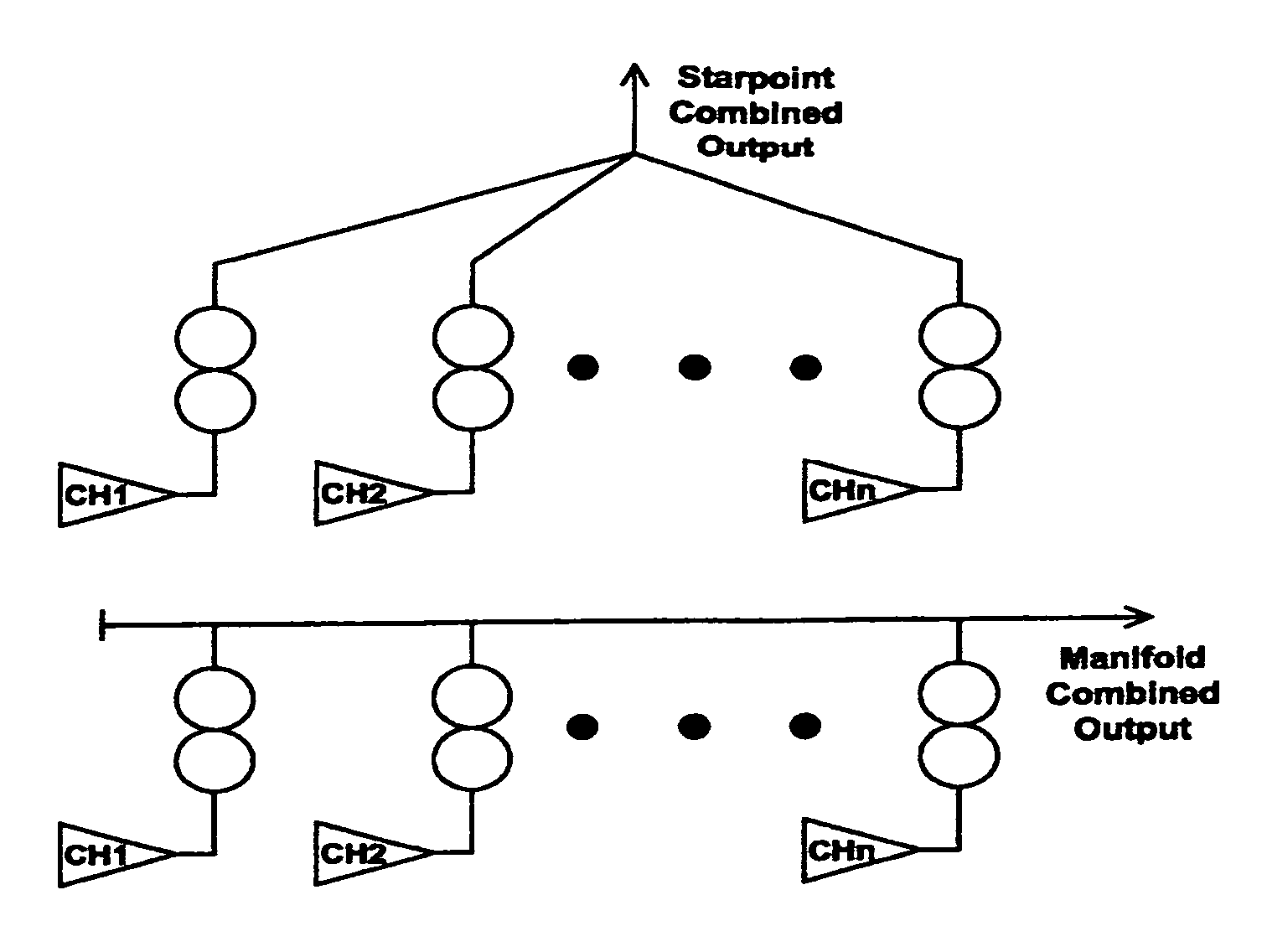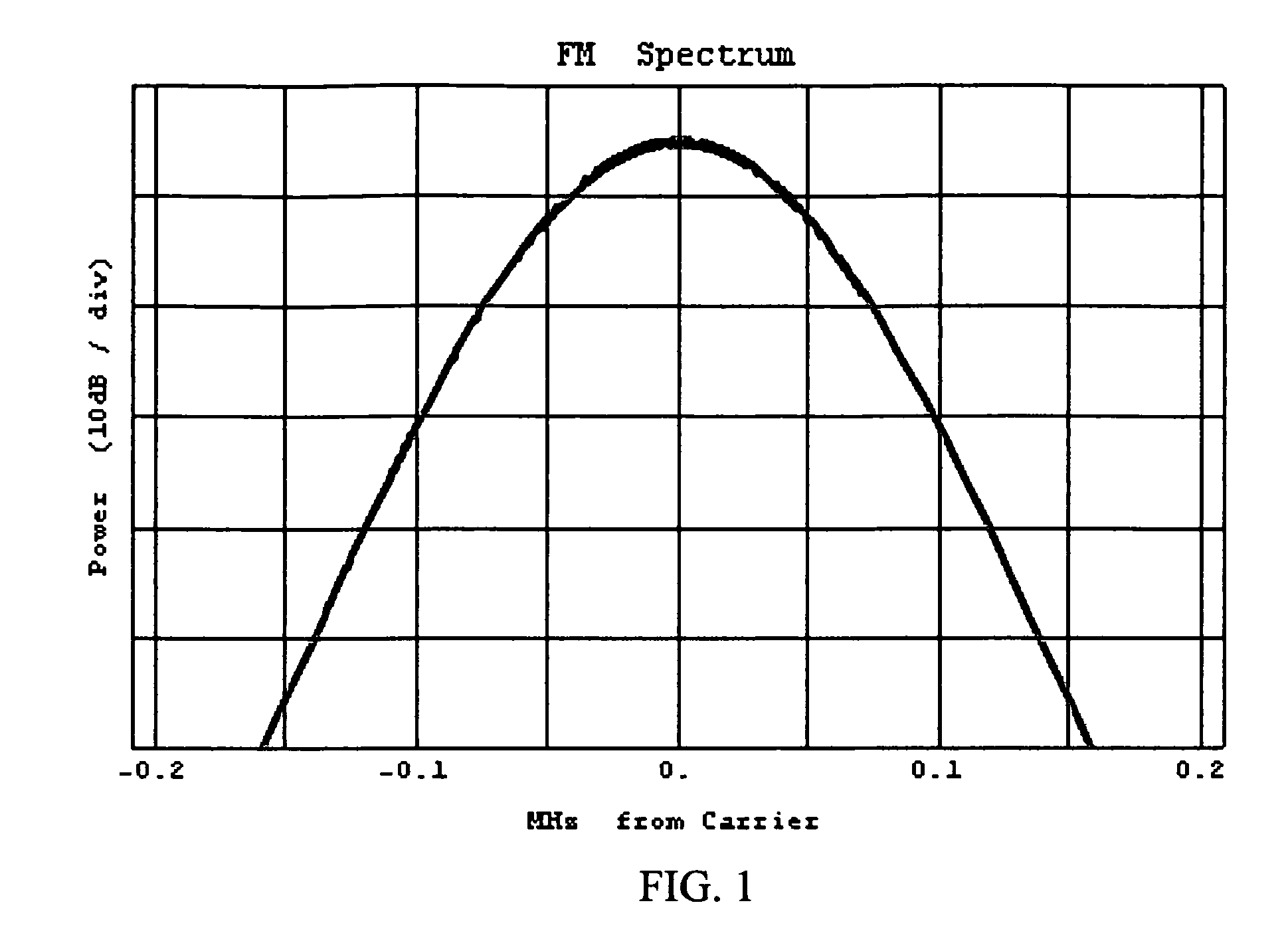Medium loss high power IBOC combiner
a combiner and high-power technology, applied in the field of medium-loss high-power iboc combiners, can solve the problems of difficult implementation, poor reception of iboc signals, transmitters cannot handle, etc., and achieve the effect of low loss fm analog
- Summary
- Abstract
- Description
- Claims
- Application Information
AI Technical Summary
Benefits of technology
Problems solved by technology
Method used
Image
Examples
Embodiment Construction
Definitions
[0045]For purposes of this invention, the terms “analog FM signal,”“analog signal” and “FM signal” will be synonymous, and will refer to a radio frequency signal that is a frequency modulated analog signal. These terms may be used interchangeably. The term “digital signal” shall mean an RF signal in digital format that shall be at the same frequency as an analog signal.
[0046]The preferred embodiments of the present invention will now be described with reference to the drawings. Identical elements in the various figures are designated with the same reference numerals.
[0047]This invention concerns an apparatus that combines the outputs of an FM analog PA and a digital PA to one output load, which could be a broadcast antenna. The apparatus has two inputs, one for the analog signal and one for the digital signal, and one output that produces an IBOC spectrum for broadcast transmission. The combiner has identical mild tuned bandpass filters that pass the FM signal with a corr...
PUM
 Login to View More
Login to View More Abstract
Description
Claims
Application Information
 Login to View More
Login to View More - R&D
- Intellectual Property
- Life Sciences
- Materials
- Tech Scout
- Unparalleled Data Quality
- Higher Quality Content
- 60% Fewer Hallucinations
Browse by: Latest US Patents, China's latest patents, Technical Efficacy Thesaurus, Application Domain, Technology Topic, Popular Technical Reports.
© 2025 PatSnap. All rights reserved.Legal|Privacy policy|Modern Slavery Act Transparency Statement|Sitemap|About US| Contact US: help@patsnap.com



